Pete Rose has memories and regrets. His newly published book, “Play Hungry: The Making of a Baseball Player,” brings them back into the spotlight. Well, maybe for the general public, at least. For baseball diehards, Rose never left the spotlight, especially when the conversation turns to the Baseball Hall of Fame and his worthiness for induction.
The baseball great was considered a lock for the Hall of Fame with a major league-record 4,256 hits at the conclusion of his playing days in 1986. Then, Rose’s life changed forever in 1989 when he was banned from baseball for gambling on the game he loved and played for a living. Conviction and imprisonment for income tax evasion followed in 1990, and the Hall of Fame formally excluded Rose and others on professional baseball’s permanently ineligible list the following year.
Public opinion remains divided to this day. Rose’s many critics argue that any player, manager, coach, umpire or executive caught betting on games in violation of Major League Baseball Rule 21 does not deserve induction into the Hall of Fame. Many of these folks, in all their self-righteousness, seem to equate induction into the Baseball Hall of Fame with canonization by the Vatican. But the Hall of Fame is no Hall of Saints.
Pete Rose belongs in the Baseball Hall of Fame. He was too great, too accomplished, a player to be left on the outside. The Hall of Fame lessens itself without his plaque on the walls. Something is missing without him.
1. He Played Like a Hall of Famer
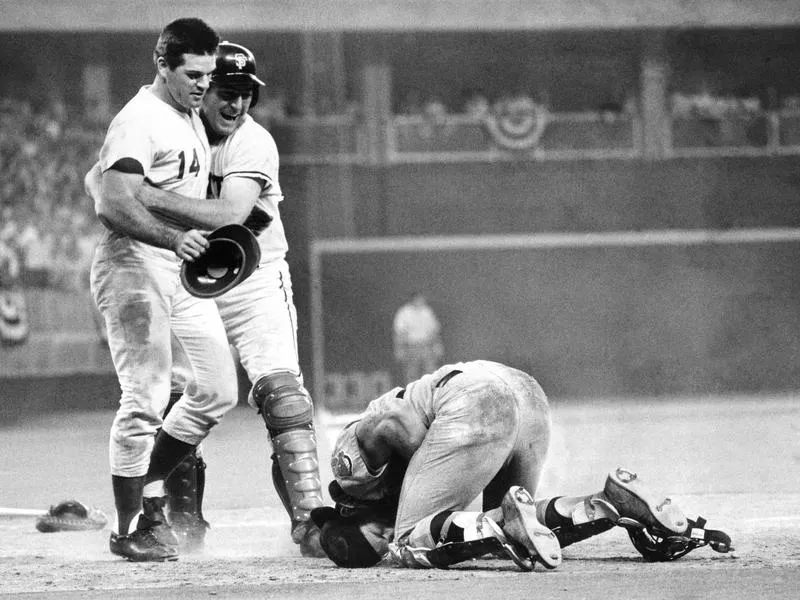
Pete Rose, left, after crashing into American League catcher Ray Fosse to score the game-winning run for the National League team in the 12th inning of the 1970 All-Star Game. AP Photo
Some fear that Pete Rose could have given less than a full effort or even have conspired to throw a game as a player, empirical evidence strongly suggests otherwise.
Dubbed “Charlie Hustle” early in his career — a nickname considered derogatory at the time — Rose played with a passion, going all-out to win games.
A most notable case occurred in the 1970 All-Star Game when Rose crashed into Cleveland Indians catcher Ray Fosse after racing home from second on a single by the Cubs’ Jim Hickman to score the winning run for the National League.
At times, Rose’s intensity went even too far for some people’s taste, such as getting into a dust-up with Mets shortstop Bud Harrelson during the 1973 National League Championship Series.
But look hard at Rose’s career. It’s tough to find any time when he did not give 100 percent as a player on the field.
2. Cincinnati, Sept. 11, 1985
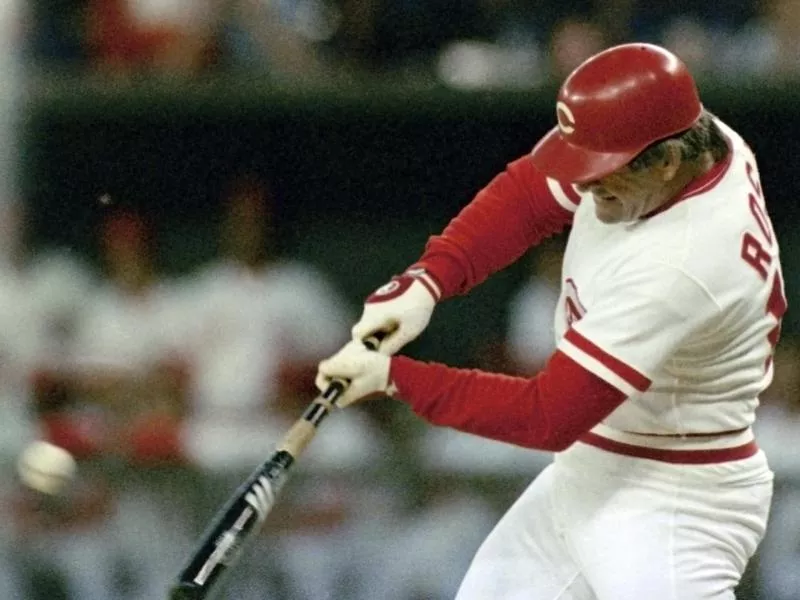
The moment Pete Rose connected for hit No. 4,192 to break Ty Cobb’s all-time hitting record. Steve Pyle
It was a time and place far apart from the tragedy that marked the same day 16 years later.
On this evening, the Queen City had a positive vibe, a buzz in the air. And the excitement only grew at Riverfront Stadium as Rose, Cincinnati born and raised, strode to the plate in the first inning against the Padres’ Eric Show.
Moments later, the cheering grew even louder when Rose singled to left-center for his 4,192nd career hit, passing Ty Cobb for the most hits in major league history. Even opposing fans appreciated the once-in-a-lifetime event — a Hall of Fame moment for a Hall of Fame-caliber player nearing the end of a Hall of Fame-caliber career.
4. A Classic Playing Style
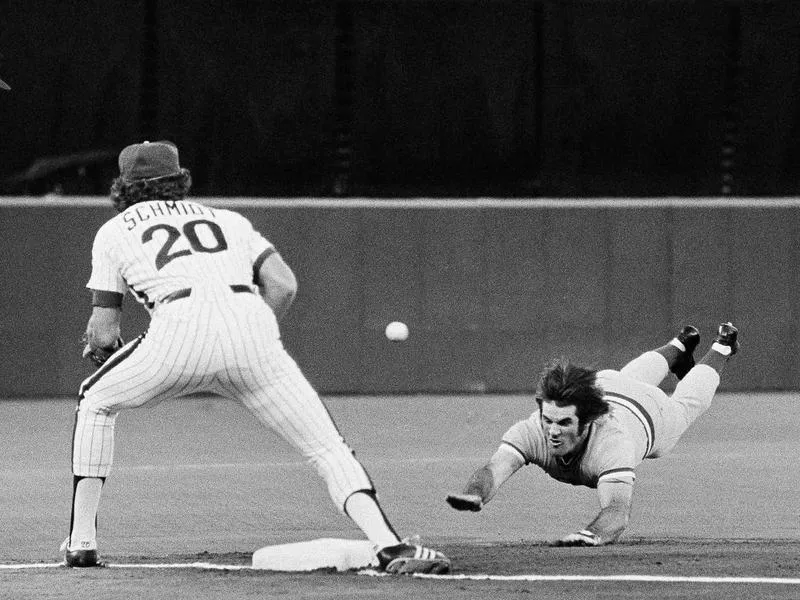
Pete Rose had 135 triples in his career. Rusty Kennedy / AP Photo
Many complained of Rose’s brashness, but the switch-hitting marvel attracted crowds everywhere he played.
Rose’s aggressive style, the head-first slides and his ability to turn singles to doubles and doubles to triples made baseball more exciting. A guy who made opposite-field hitting look easy, Rose excelled both in the art of baseball and the science of baseball.
Yes, Rose had talent, but his blue-collar approach of making the most out of the least appealed to many.
Overall, while we might not know the full extent of Rose’s gambling, baseball was more than happy when turnstiles kept clicking and revenues kept pouring in as fans flocked to his games.
5. A 17-Time All-Star — at Five Positions

Pete Rose in action at the 1985 All-Star Game in Minneapolis, Minnesota. John Swart / AP Photo
His most memorable All-Star appearance may have been that 1970s game when he crashed into Ray Fosse, but Rose achieved his first All-Star selection in his 1965 breakout season.
Twenty years later, he appeared as a pinch hitter in his last. In between, Rose played in five consecutive Midsummer Classics from 1967 to 1971, then 10 more in a row from 1973 to 1982.
Throughout his career, Rose also displayed versatility and a team-first attitude. His All-Star appearances reflected all of this as he was selected as a second baseman, left fielder, right fielder, third baseman and first baseman.
6. The Hits Kept Coming
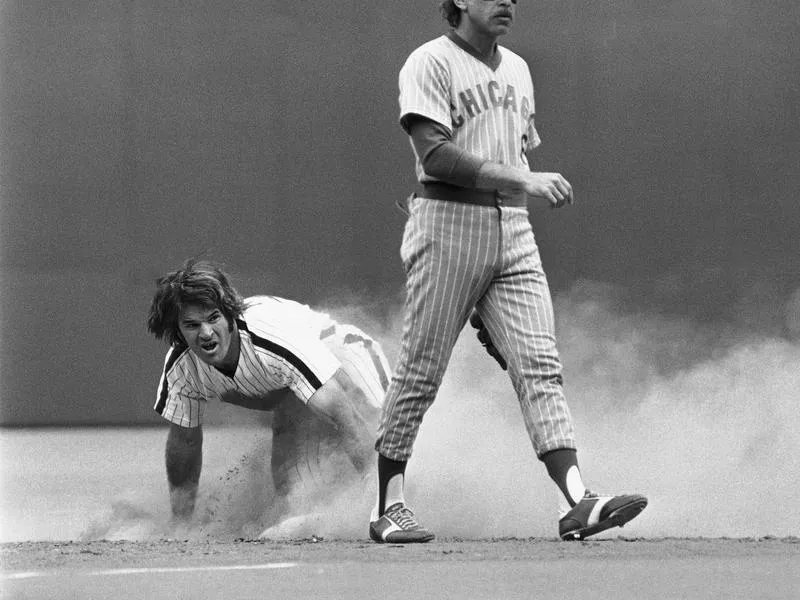
Teammates loved Pete Rose. Opponents, not so much. Rusty Kennedy / AP Photo
Pete Rose made his major league debut on April 8, 1963, at 22 years old. After a disappointing sophomore season in 1964, Rose sprang back in a big way to lead the NL with 209 hits in 1965, his first of 10 seasons with more than 200 hits (a record later matched by Ichiro Suzuki).
Rose’s last 200-hit season came in 1979, when he had 208 for the Phillies. In between, he recorded such noteworthy numbers as a career-high 230 hits in 1973, 218 in 1969 and 215 in 1976.
Perhaps most deserving of mention are the 210 hits he collected in 1968 with the Reds (he shared the National League lead with Felipe Alou). Not only did this occur in the so-called year of the pitcher, but Rose reached this mark despite spending some time on the disabled list.
7. Major League Leader
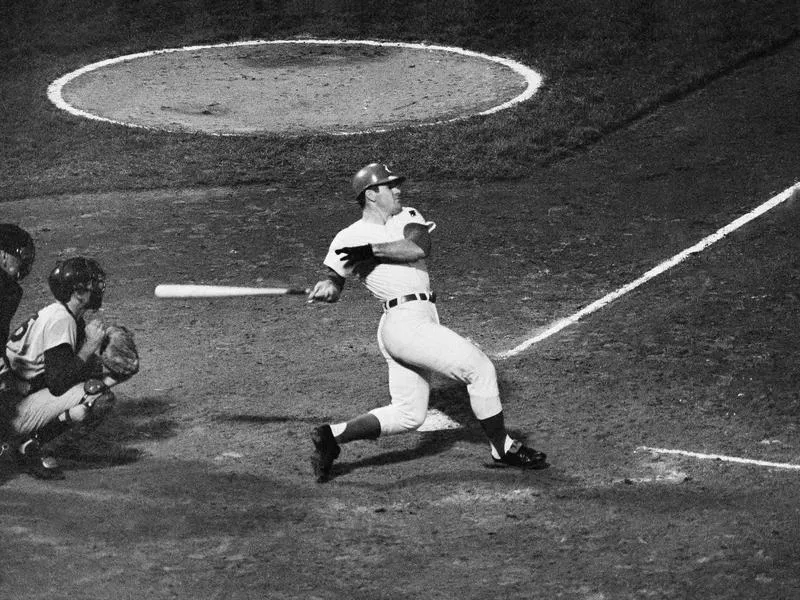
Pete Rose was a career .303 hitter. AP Photo
Besides leading the NL in hits seven times — the last being 140 in the strike-shortened 1981 season at age 40 — Rose also boasts three batting titles on his résumé.
The first came in the aforementioned 1968 season when he hit an amazing .335, by far the best in all of Major League Baseball (Boston’s Carl Yastrzemski, in contrast, led the American League at .301, the lowest in history over a full season).
Rose retained his batting crown in 1969 by hitting a career-best .348.
Rose topped the league in batting again when he finished at .338 for the 1973 campaign.
Rose ultimately finished his career as a .303 lifetime hitter.
9. All-Around Productivity
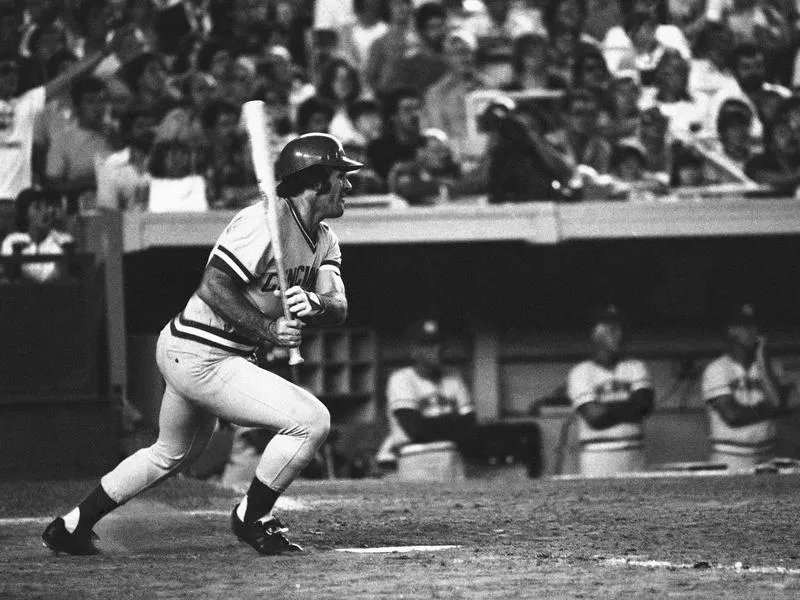
Pete Rose had 14,503 at-bats in his career. Burnett / AP Photo
Players who hit for high averages often mistakenly get tabbed as singles hitters. Rose provided a lot more.
He led the league in doubles five times and finished with 746 for his career. While he never led the league in triples, Rose legged out a career-high 11 three times and finished with 135 career three-baggers, and though he often was a leadoff hitter (10,710 plate appearances batting first), Rose also displayed occasional pop with 160 home runs.
He was more than just hits, though. He scored more than 100 runs in 10 seasons, leading the league in four of them. He finished his career with 2,165 runs, which now stands sixth in history.
10. Individual Awards
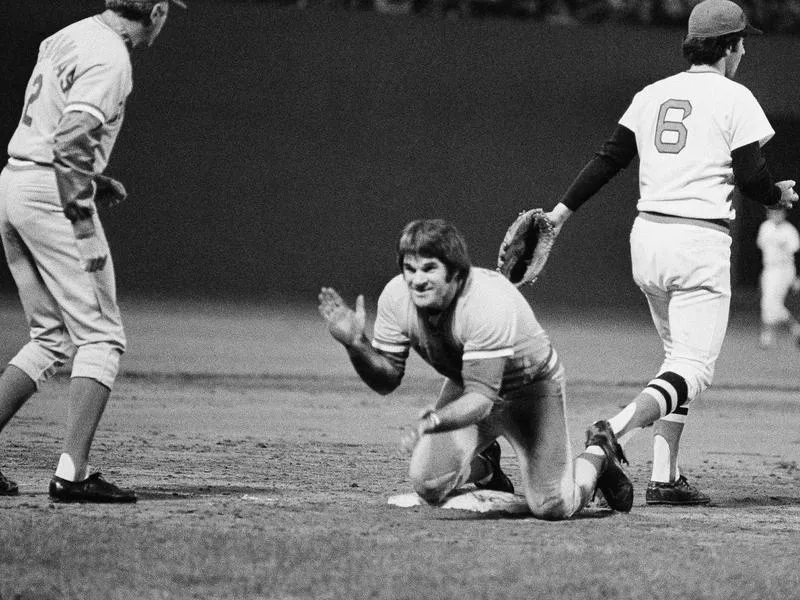
Pete Rose won three World Series rings in his career. PB / AP Photo
As further evidence of his on-field dominance, Rose collected some notable hardware in his career, starting with his inaugural 1963 season when 170 hits, including nine triples, a .273 average and 101 runs earned him National League Rookie of the Year honors.
He enjoyed one of his finest seasons a decade later to garner the aforementioned 1973 NL MVP.
And everything came together extremely well in 1975 when Rose’s World Series MVP performance (.370 batting, .485 on-base percentage) gave the Reds their first Series title in 35 years.
Defensively, Rose impressed enough as an outfielder to win consecutive Gold Glove Awards in 1968 and 1969.
12. Rose Rocks Steady After Big Red Machine Breaks Up
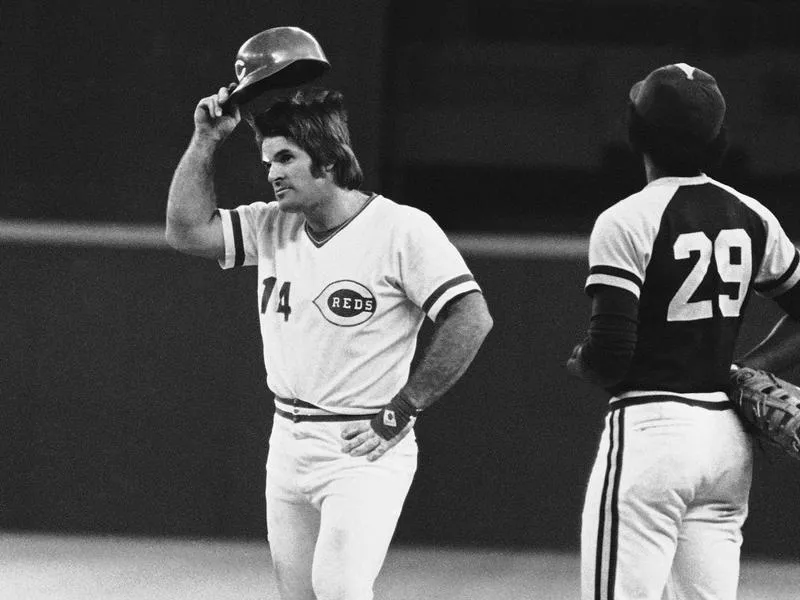
Pete Rose tips his hat to the crowd at Riverfront Stadium after getting his 200th hit of the 1977 season, tying Ty Cobb with his ninth season with 200 or more hits. AP Photo
The coming of free agency brought big changes to the Reds in 1977. Starting pitcher Don Gullett signed with the Yankees, and an offseason trade of Tony Perez to Montreal further weakened the club, which dropped to second place in the NL West.
Rose, though, played with his usual passion, amassing 204 hits and a .311 average. During the course of the season, Rose collected his 2,881st career hit, putting him past Frankie Frisch as the all-time leader among switch-hitters (Eddie Murray later surpassed Frisch, too).
Rose finished the season sitting at 2,966 career hits with the promise of much more to come in 1978.
13. The 1978 Season
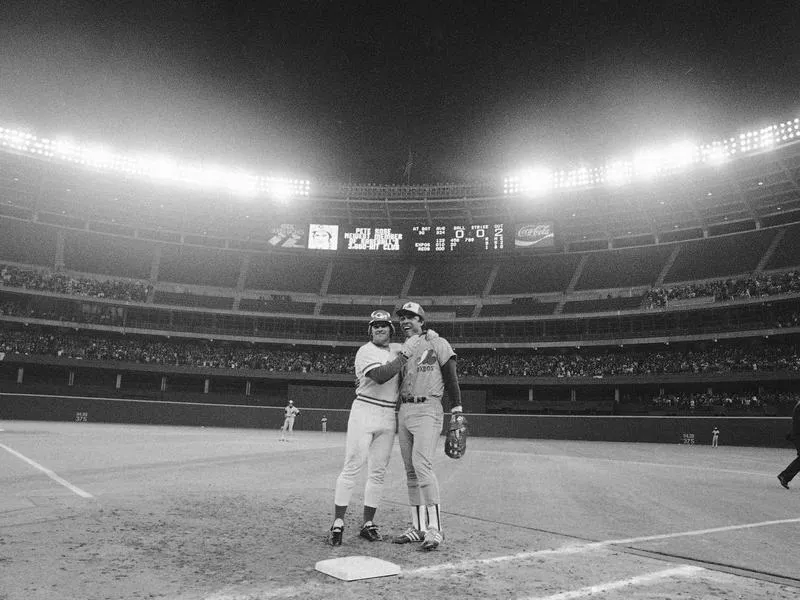
Cincinnati Reds captain Pete Rose hugs Montreal Expos first baseman and former Reds teammate Tony Perez after hitting a single in 1978 to reach 3,000th career hits. AP Photo
Rose ended his first tenure with the Reds with an eventful 1978 season.
It began with much anticipation, as he needed just 34 hits to reach the vaunted 3,000 career mark. Rose reached that milestone on May 5 with a single off Montreal’s Steve Rogers.
But Rose had a lot more in store. On June 14, a pair of singles against the Cubs launched a hitting streak that stretched 44 games before ending Aug. 1 in Atlanta.
Along the way, Rose surpassed the modern era NL mark that Tommy Holmes set with the Boston Braves in 1945 and matched the record set in 1897 by Hall of Famer Wee Willie Keeler.
16. 4,000 Hits
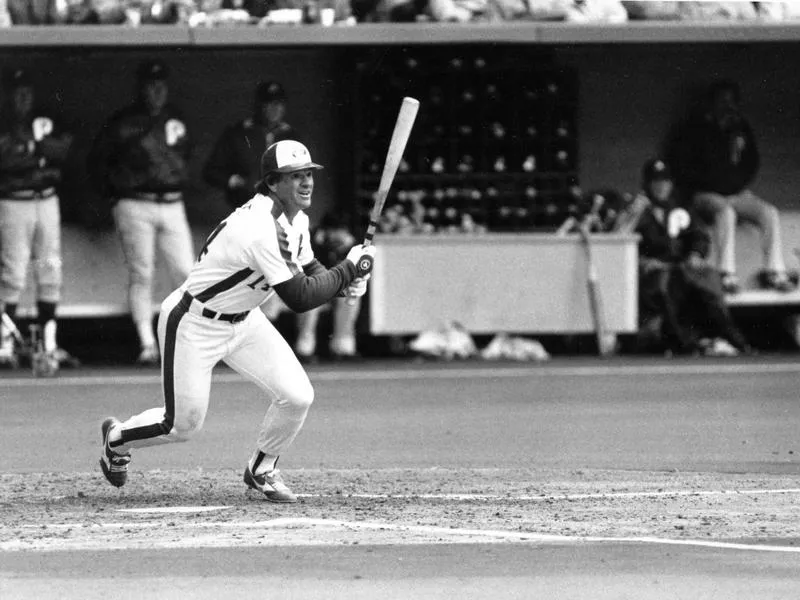
Pete Rose hits a double off Phillies pitcher Jerry Koosman for his 4,000th career hit. AP Photo
With his career winding down, Rose signed with the Expos for the 1984 season. He played 95 games with them before being traded to the Reds on Aug. 16 to become their player-manager.
Rose provided Expos fans one major highlight in his short time with the team. Batting right-handed against lefty Jerry Koosman of the Phillies, Rose drilled a double down the right-field line for his 4,000th career hit to join Ty Cobb as the only players to reach that mark.
This achievement occurred on April 13, the eve of Rose’s 43rd birthday, and 21 years to the day after his first major league hit.
17. Many, Many Milestones
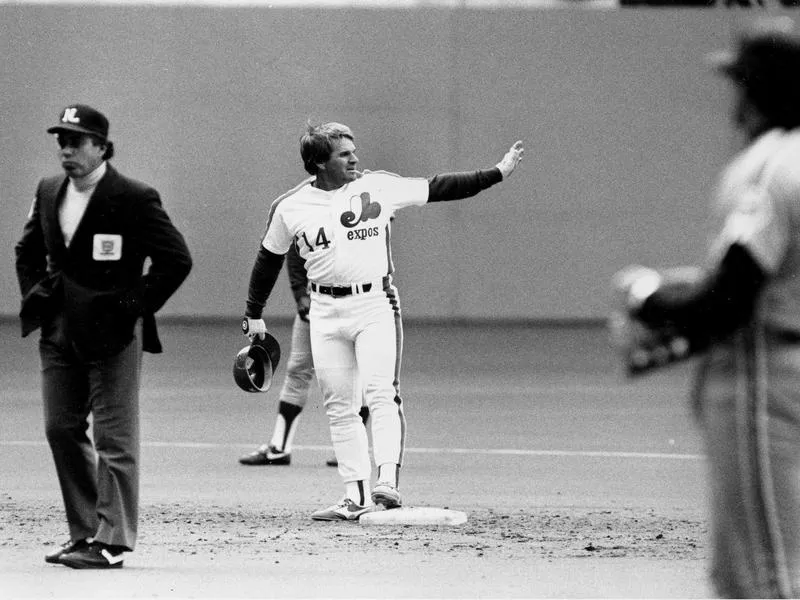
Pete Rose had a career .375 on-base percentage. Rusty Kennedy / AP Photo
Pete Rose went 0-for-12 start to his rookie season in 1963, then collected his first major league hit on April 13, 1963, the eve of his 22nd birthday, with a triple off Pittsburgh’s Bob Friend.
After that, Rose reached future milestones with amazing regularity — with his 500th hit coming in 1965, his 1,000th in 1968, his 1,500th in 1970, his 2,000th in 1973 and his 2,500th in 1975.
After collecting his 3,500th in 1980, Rose surpassed Stan Musial’s mark of 3,630 in 1981 to become the all-time NL hits leader. And the next year, he passed Hank Aaron’s career mark of 3,771 to move into second place in his chase of Cobb’s record.
18. ‘Baseball as America’
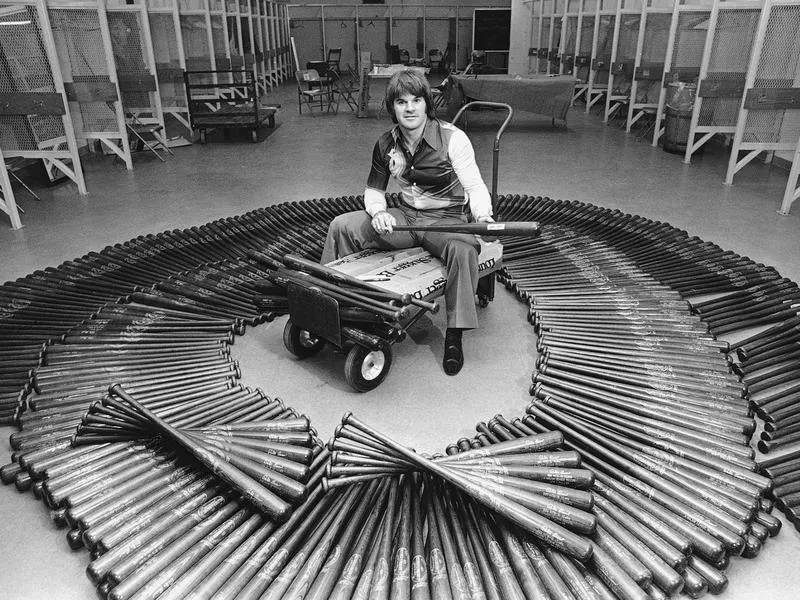
Pete Rose signs hundreds of bats that commemorate his 10th 200-hit season in 1979, a major league record. About 1,200 of the autographed bats were given to early buyers of 1980 season tickets for the Phillies. Bill Ingraham / AP Photo
In 2005, the Baseball Hall of Fame’s traveling exhibit, “Baseball as America,” made its San Francisco Bay Area stop at the Oakland Museum of California.
It was a wonderful experience for any baseball fan. Displays included Pete Rose’s batting helmet from his record-setting evening in 1985.
So the Hall of Fame can display a record-setting player’s artifacts but deny that same player a plaque? By displaying the helmet, the Hall of Fame recognizes that Rose played a major role in baseball history.
In 2016, the Cincinnati Reds did the right thing and honored the all-time hit king. Rose was inducted into the Reds Hall of Fame, and the team retired his No. 14.
19. Don’t Just Blame the Commissioner
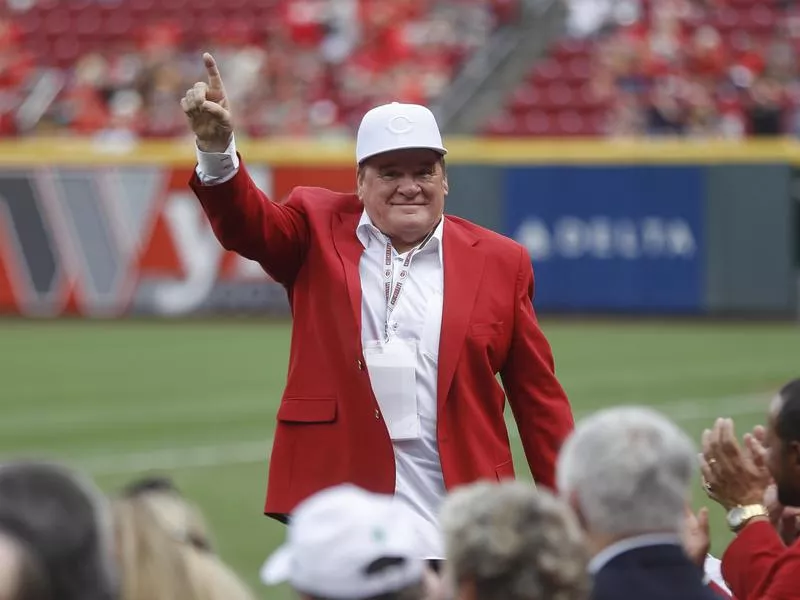
Pete Rose, before a Reds game in 2018, is still an icon in Cincinnati. John Minchillo / AP Photo
Rob Manfred and his predecessors do not deserve all the criticism for Pete Rose’s Cooperstown status. Much of that responsibility lies with the Baseball Hall of Fame Board of Directors, who steadfastly deny consideration to those deemed permanently ineligible.
Had this rule been in effect some years earlier, how would the situations of Hall of Famers Willie Mays and Mickey Mantle been handled when Bowie Kuhn banned each for having accepted employment with casinos?
Perhaps the thought of a commissioner presenting Rose a plaque makes board members uneasy. As grown people, though, both parties should be able to get through the ceremony with proper decorum.
Pete Rose earned his place in Cooperstown long ago.